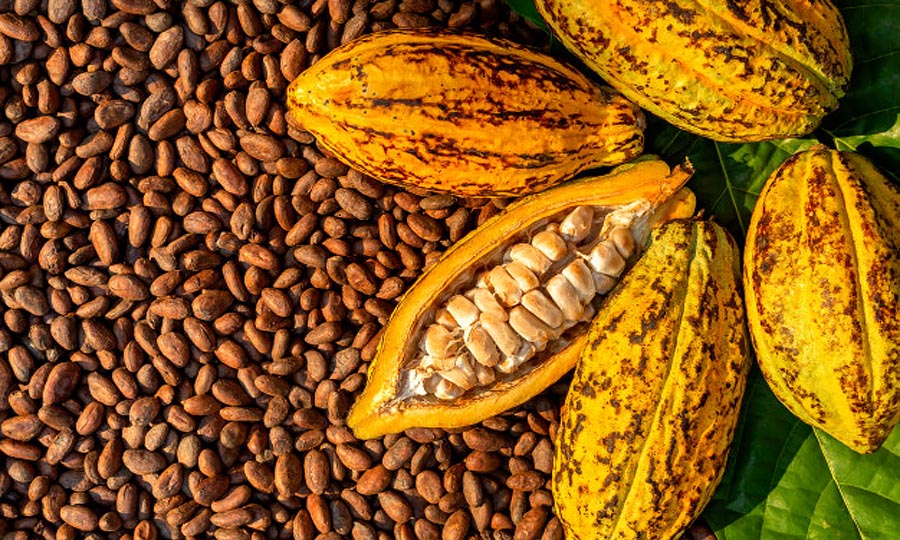Cocoa prices drop by 26% in two days amid uptick in rainfall, boost in Nigeria’s output
Cocoa prices moderated past its two and a half-week low on Tuesday amid a boost in supplies from Nigeria and an uptick in rainfall. Nigeria, the world’s fifth largest cocoa producer, reported that its March cocoa exports rose +19% y/y to 22,199 metric tons.
Cocoa active contracts dropped more than a fifth of their value in a span of two days to settle at $7,500 a ton in the US after it soared to record highs earlier this year.
The cash crop fell when it began to rain in West Africa, allaying fears that the crop would be significantly reduced next year.
After it started to rain in West Africa, cocoa prices declined, allaying concerns that the crop would be severely lowered next year.
Prices reached $11,800 per ton in mid-April due to shortages among suppliers and lower yields for growers owing to unpredictable weather, illnesses of trees, and low investment.
Around 75% of the world’s cocoa is produced in Ghana, Ivory Coast, Nigeria, and Cameroon, but this year’s harvests could be subpar.
Recent official figures highlighted that between October 1 and April 28, 2023, Ivory Coast farmers shipped 1.34 million metric tons of cocoa to ports, a 30% decrease from last year. Ivory Coast’s 2023–24 cocoa production, which ends in September, is expected to drop by 21.5% y/y to 1.75 MMT, an 8-year low, according to Ecom.
Unfavorable growing conditions and crop disease on West African farms have reduced cocoa production and driven up cocoa prices in a parabolic fashion.
Recommended reading: Nigeria to earn $3 billion from cocoa as prices stay higher than $10,100 per ton
Cocoa supplies remain tight
Recent fundamentals anticipate there could be a global cocoa shortage through 2023–2024 since the present output cannot keep up with demand. Because of the recent volatility in cocoa prices, it has become more expensive to hold positions in cocoa futures due to the steep increase in margin requirements, which forces traders to close out of bets and reduces liquidity, making the market more susceptible to significant price swings.
The Hydrological Service Agency has warned about severe flooding in the primary cocoa-growing regions of Nigeria, which will cause disruptions to the country’s planting and mid-crop harvest.
The Minister of Water Resources and Sanitation, Joseph Utsev, stated in Abuja that the states that are prone to flooding are Ondo, Cross River, Osun, Oyo, Ogun, Taraba, and Delta. 94% of the country’s supply of chocolate comes from these states.
Tighter cocoa supplies are also a result of worries about the smaller of the two-yearly harvests in West Africa, known as the mid-crop. Estimates for the mid-crop in Ghana, which begins in July, have been lowered from an earlier estimate of 150,000 MT to 25,000 MT. Additionally, the Ivory Coast cocoa regulator stated on March 7 that it anticipates a 33% decline to 400,000 MT from 600,000 MT last year in the Ivory Coast mid-crop, which formally begins in April. Furthermore, estimates for Nigeria’s mid-crop have dropped from an earlier forecast of 90,000 MT to 76,500 MT.





